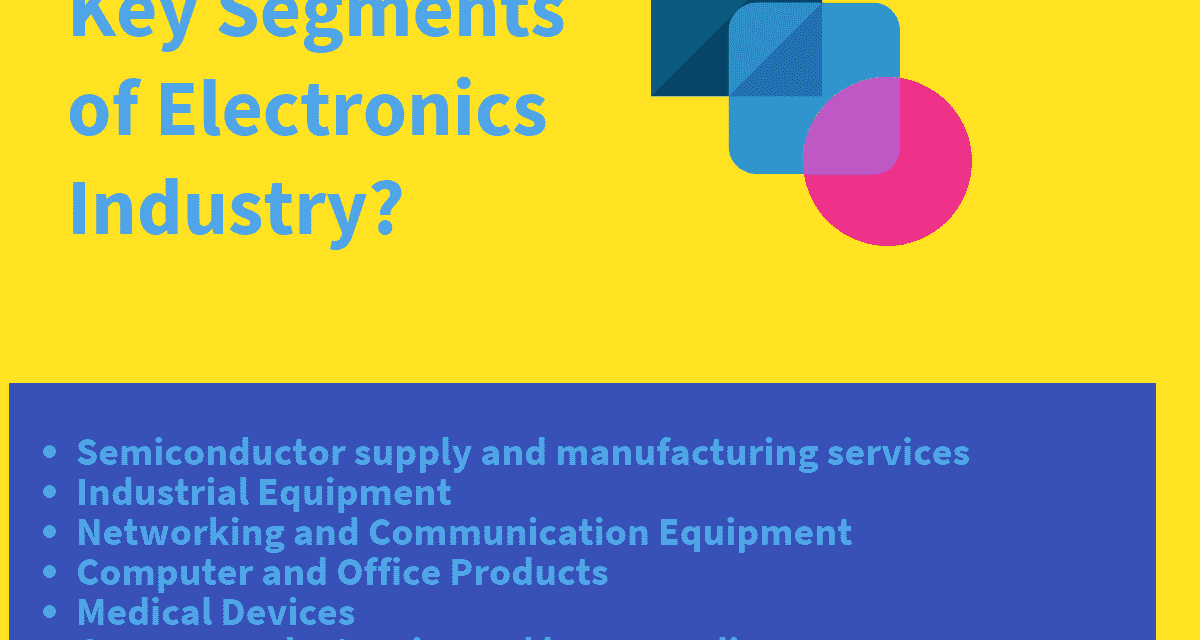The electronics and electrical equipment industry is vast and diverse, encompassing a wide range of segments. Here are some of the main categories within this industry:
1. Consumer Electronics
- Products: Smartphones, tablets, laptops, televisions, audio systems, wearables (e.g., smartwatches, fitness trackers), and gaming consoles.
- Focus: The development and manufacturing of devices for personal and home use, driven by consumer demand for innovative, user-friendly, and high-tech gadgets.
2. Industrial Electronics
- Products: Industrial automation equipment, programmable logic controllers (PLCs), sensors, drives, industrial robots, and control systems.
- Focus: Electronics used in manufacturing and industrial processes to improve efficiency, precision, and productivity.
3. Electrical Equipment
- Products: Power generation equipment (transformers, generators), switchgear, circuit breakers, electrical panels, and electrical cables.
- Focus: Equipment used for electrical distribution, power generation, and transmission in residential, commercial, and industrial sectors.
4. Renewable Energy Equipment
- Products: Solar panels, wind turbines, battery storage systems, and inverters.
- Focus: Equipment and technologies that facilitate the generation, storage, and distribution of renewable energy, such as solar and wind energy.
5. Semiconductors
- Products: Microchips, integrated circuits (ICs), transistors, diodes, and capacitors.
- Focus: The production of semiconductor devices that are essential for virtually all modern electronics, from smartphones to industrial machinery.
6. Power Electronics
- Products: Inverters, rectifiers, power converters, and voltage regulators.
- Focus: The conversion, control, and conditioning of electrical power for applications like electric vehicles (EVs), renewable energy systems, and industrial machinery.
7. Automotive Electronics
- Products: Electric vehicle (EV) batteries, electric motors, vehicle infotainment systems, sensors, and driver-assistance technologies.
- Focus: The integration of electronic systems in vehicles, including the development of electric and autonomous vehicles.
8. Telecommunications Equipment
- Products: Network routers, switches, cellular towers, satellite communications equipment, and fiber optics.
- Focus: Technologies used to facilitate data transmission and communication, including 5G infrastructure and broadband networks.
9. Medical Electronics
- Products: Diagnostic devices (e.g., MRI machines, ECG monitors), medical imaging equipment, wearable health tech, and pacemakers.
- Focus: Electronic devices used in healthcare for monitoring, diagnosing, and treating medical conditions.
10. Lighting Equipment
- Products: LED bulbs, street lighting systems, smart lighting solutions, and lighting control systems.
- Focus: The design, manufacture, and distribution of lighting products, including energy-efficient and smart lighting solutions.
11. Test and Measurement Equipment
- Products: Oscilloscopes, multimeters, signal generators, power analyzers, and spectrum analyzers.
- Focus: Tools used to measure and analyze electrical and electronic parameters, essential for quality control, R&D, and troubleshooting.
12. Consumer Appliances
- Products: Refrigerators, washing machines, microwaves, air conditioners, and other household appliances.
- Focus: Electronic systems used in home appliances to improve convenience, energy efficiency, and functionality.
13. Aerospace and Defense Electronics
- Products: Radar systems, communication satellites, avionics, and military-grade electronics.
- Focus: The development and deployment of electronics for national defense, space exploration, and air travel.
14. Robotics and Automation
- Products: Robots, automation systems, drones, and AI-powered machines.
- Focus: The integration of electronics and software in robotic systems to automate tasks in industries such as manufacturing, logistics, and healthcare.
Each of these segments plays a critical role in driving innovation and shaping the future of the global electronics and electrical equipment industry. The sector is marked by constant evolution as new technologies, such as AI, IoT, and 5G, transform these various domains.














